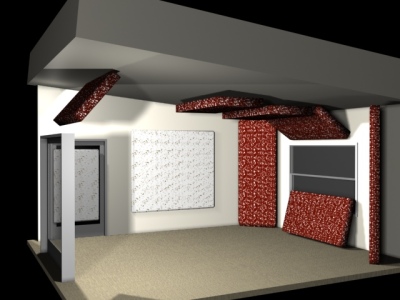
Rooms have a habit of “sounding bad”, especially small apartment rooms with a computer stuffed into them. The common way to deal with this is with acoustic treatment which is a lot more expensive than most of us can imagine. Today we’ll talk a little about DIY treatments.
DIY – do it yourself – will obviously not give as good results as buying a professional package. It’s also important to note that the DIY treatments that I will suggest today will not give as good results as DIY solutions out there that includes some investment in proper material and some building. The things I will talk about in this post are using what you might have at home.
When people build their own vocal spots at home, they often think small boxes and singing straight into a wall. Many experts will however point out the problems with this solution. I think the same could be applied to spoken word in podcasts – it will sound “boxy”.
The corner version
A better way is to find a corner, place a thick mattress there (covering as much as possible from the ground to the roof) and standing/sitting with the back against the corner. The bigger the space in front of you the better. If you want to make things even better, place a thick rug there. If possible, use something in the roof as well. The most important spot for the roof and the floor is between you and the mic.
The desk version
Some might want to sit at their desk and record their podcast. For this situation I will go about the same way as a mixer should set up his control room. Place the desk (if possible) slightly closer towards one wall so you have a little more space behind you than front of you. For treatment in this situation, the key is in symmetry. You will want to do something about the spot directly in front of you and directly behind you. For the spot behind you a natural absorber, like a book shelf, will do just fine.
Other spaces to cover are the sides. As with the corner situation you could do something about the reflections from the ground (again a thick rug) and the roof.
What’s this I hear about bass traps?
Ideally they should be in the corners. I don’t have a ultra-cheap DIY way of doing them so that will be covered some other time.
Speaking of bass though. Someone said that generally the thicker the material, the more bass it will absorb. Many kind of clothings will absorb little or no bass at all. For spoken word – as podcasts usually are – you can cut pretty much of the bass afterwards with the EQ without affecting the sound of the voice in a bad way. More about this in another post.
Originally posted on November 16, 2007 @ 1:14 pm